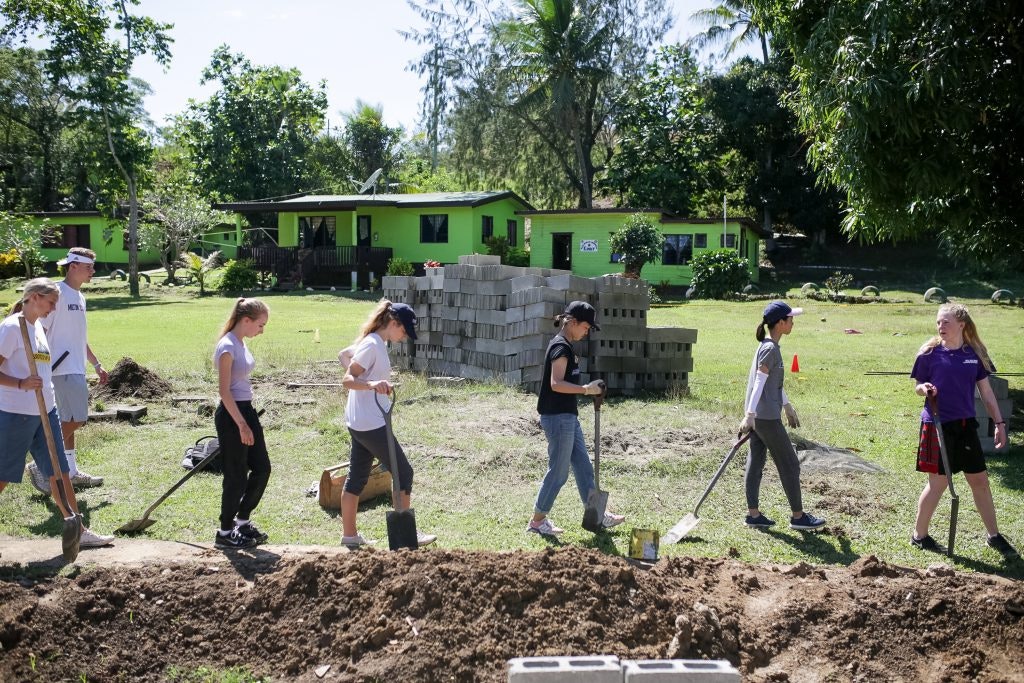You’ve put in the hours, and now it’s time to make sure your volunteer work gets the attention it deserves on your resume. Whether you’re applying for a job, an internship, a college program, or changing careers, listing volunteer experience the right way can showcase the qualities employers value:
- Teamwork
- Leadership
- Service Orientation
- Self-Motivation
- Reliability
Volunteering isn’t just about filling space on a resume; it tells a story. It shows that you’re more than just grades and achievements. It shows that you’re someone who takes initiative and cares about making an impact. Experiences like service trips for teens can highlight skills and real-world experience that set you apart from other candidates.
You can also highlight flexible work experience. Online jobs and side hustles for teens not only build independence but also strengthen your application.
Related: Apply to become a Rustic Pathways brand ambassador
Here’s how to list your volunteer experience for maximum impact with minimal effort!
In this guide, we’ll look at:
Key Statistics About Volunteering:
- 82% of hiring managers prefer candidates with volunteer experience.
- 92% believe volunteering helps expand professional skills.
- 85% are willing to overlook weaknesses in a resume when volunteer work is listed.
- Job seekers with volunteer experience are 27% more likely to get hired after unemployment.

Students gain new experiences while on a service-learning trip.
How to Include Volunteer Work on Your Resume
1. Format for impact
Recruiters typically scan resumes by focusing on section headers, job titles and employers, so a well-marked volunteer experience will catch their attention effectively.
- Place your volunteer work in the experience section when it’s highly relevant.
- Create a separate section when it’s less related to the position you are applying for.
Example: Are you applying for a project management role and have led a team during your volunteer work? Highlight this experience in the “Experience” section.
Follow this structure:

2. Keep it concise
Be strategic with the content you include. Focus on including the most impactful and relevant information for the job you’re targeting.
Match your volunteer experiences with the job description by including relevant keywords and highlighting how your contributions made a difference.
For instance, for your dream role in project management, emphasize your experience leading a team and organizing events by showcasing your volunteer work in coordinating community fundraisers.
Summarize each role with a clear, impactful sentence.
Example:
Event Coordinator Volunteer | Community Group | Austin, TX | June 2024 Organized a charity event that attracted 300 attendees and raised $5,000 for local causes.
3. Choose relevant experiences
Choose volunteer roles that showcase skills or accomplishments related to the job you’re applying for. Focus on experiences that highlight leadership, problem-solving or industry-specific skills.
Note: Be aware that there is a chance that certain organizations might reveal more personal details than you’d like. For instance, volunteering with a specific advocacy group might indicate your personal beliefs or affiliations. This could open you up to unintended biases.

Enhance your resume by showcasing valuable volunteer experience on your resume.
Final Tips
- Tailor your resume: Customize your resume for each job application by highlighting volunteer work that’s most relevant to the position.
- Include keywords: Incorporate keywords from the job description to ensure your volunteer experience aligns with the role you’re applying for.
- Be selective: Include volunteer experience on your resume only when it adds value or provides important context.
- Label it: Distinctly identify your volunteer experience by using headings like “Volunteer Experience” or “Community Service” to make it stand out.
GOOD LUCK! 🍀
Related content:
Best Guide to Summer Volunteer Programs

